Sales battlecards (also known as competitive battlecards, or simply as battlecards) give your sellers the facts, tactics, and materials they need to win competitive deals.
Before we go any further, a note for those of you who prefer to watch rather than read: Everything covered in this blog post is also covered in this video!
Produced by nearly two-thirds of competitive intelligence (CI) teams, battlecards are growing more popular by the day—and for good reason: A whopping 47% of sales opportunities are competitive.
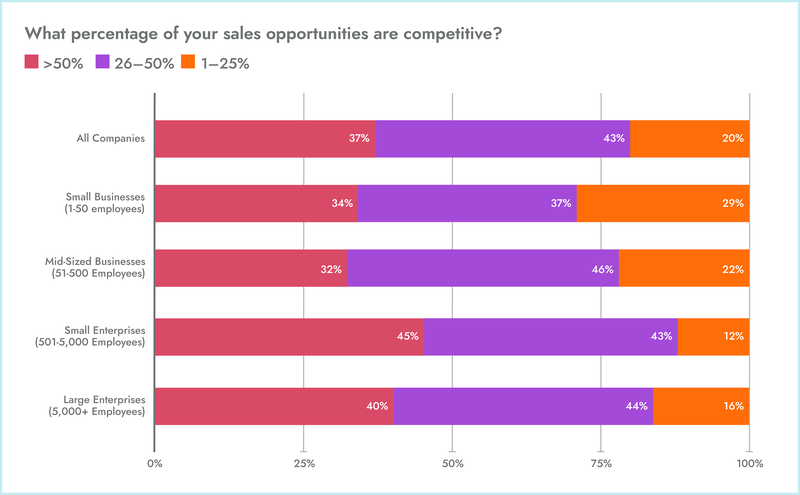
Whether you’re trying to create your company’s first-ever battlecard from scratch or improve the battlecards that you’ve inherited from somebody else, you’ve come to the right place. By the time you’re done reading this blog post, you’ll have an answer to each of the following questions:
- What is a battlecard?
- How do you use battlecards?
- What do you put in a battlecard?
- What do battlecards look like?
- How do you make battlecards?
- How do you drive adoption of battlecards?
Let’s get started!
What is a battlecard?
A battlecard is a resource designed to help your sales team when they go head-to-head against a particular competitor. As an example, if you were hired by Slack to create battlecards for their sales team, you’d create one for Microsoft Teams, one for Mattermost, one for Rocket.Chat, and so on.
How do you use battlecards?
Different sellers will use the same battlecard for different reasons. To a new hire, a battlecard is an educational tool—something they need to study in order to reinforce their training and get up to speed quickly. To a veteran, a battlecard is more of a content hub—a one-stop shop for the latest datasheets, slide decks, etc.
Because different sellers have different needs, some CI teams create multiple sales battlecards for each competitor. Returning to our Slack example, you may decide to create a Microsoft Teams battlecard for your BDRs (little detail, designed to make them better at cold calling) and another for your AEs (more detail, designed to make them better at running demos).
As we’ll discuss later in this post, you need to talk to your sales team before you create battlecards. Don’t assume that you know what they need. Everyone uses battlecards differently.
Competitive comparisons vs. battlecards
Competitive comparisons and battlecards are not the same thing—but they’re closely related.
A competitive comparison is something you create to help yourself better understand the similarities and differences between your product and a competitor’s product. In other words, it’s an analytical tool. In some cases, it can also be a deliverable—your product management team, for example, may find it valuable—but it is, first and foremost, an analytical tool.
A battlecard, on the other hand, is strictly a deliverable—something you give to others to help them understand (and communicate) your differentiators. If you’re going to create a competitive comparison, it’s best to do so before creating the corresponding battlecard.
What do you put in a battlecard?
Whatever your sellers need to help them beat that competitor—no more, no less.
Emphasis on no more. A competitive battlecard should be concise. Sellers have neither the time nor the patience to read paragraphs. Give them a battlecard with too much information and they’ll dismiss it as yet another resource that’s of no use to them.
To determine what to put in a battlecard, you have to talk to your sales leaders. Why do your sellers beat Competitor X? Why do they lose to Competitor X? Are any of your customers former users of this competitor’s product? If so, why did they make the switch?
Your sales leaders’ answers to these questions will point you in the direction of your veteran sellers, with whom you should speak as well. The stories of their wins and losses will reveal what you need to include in your battlecard.
Once you’ve spoken with everyone and gotten an understanding of how you stack up against Competitor X, some of the things you may put in your battlecard include:
- Why We Win: What are the top 3 things that make your product superior, and why do these matter to your customers? Bonus points if you can (1) validate each differentiator with an actual customer story and (2) share examples of your top-performing sellers bringing these differentiators to life.
- Competitor Strengths: What are the top 3 things that make your competitor’s product superior, and how should your sellers respond when these come up in conversation? Again, bonus points for sharing examples of your top performers in action. Double bonus points for writing short paragraphs that your sellers can copy and paste into their emails.
- Recent Wins: Some sellers prefer to learn by speaking directly with their peers. Point them in the right direction by keeping a list of who’s having success against Competitor X right now. Bonus points if you can segment this list by use case, industry, company size, or some other variable that’s relevant to your team.
- Recent Field Intel: Did one of your sellers recently hear that Competitor X is outsourcing their customer support? Changing their packaging? Sunsetting a feature? It’s important to quickly make pieces of intel like these—accompanied by the so what—available to the whole team, as they can dramatically improve your sellers’ chances of winning their open deals.
If there’s one thing you take away from this section, it should be this: It’s not your job to be the all-knowing CI expert. When it comes to battlecards, the most impactful thing you can do is keep tabs on who’s having success against each competitor and enable everyone else to learn from them.
What do battlecards look like? Here are 2 examples
Using the types of content listed in the previous section, your battlecard might look like this …
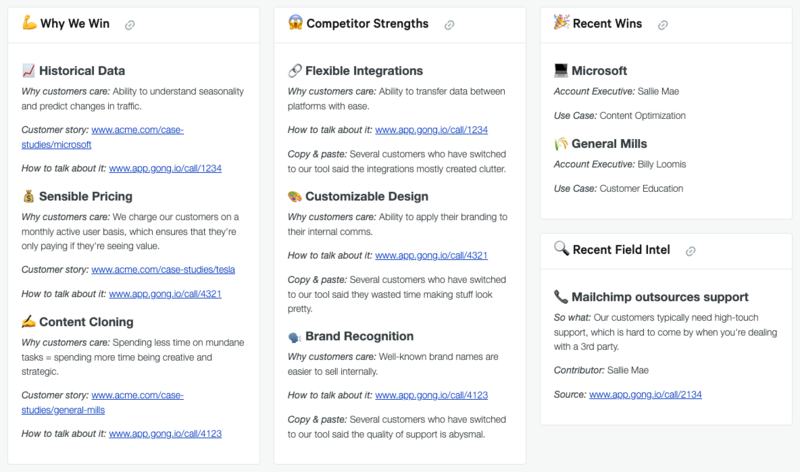
… or it might look like this:
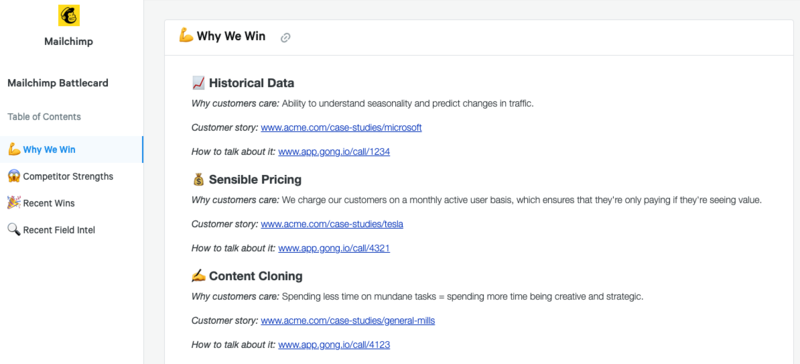
Concise, scannable, and full of customer stories and live examples—that’s a great battlecard.
A couple more things to keep in mind as you’re creating your battlecards:
- Be accurate. All it takes is one piece of bad intel to lose the trust of your sellers.
- Be consistent. Using the same format for each of your battlecards will help your sellers find the information they’re looking for as quickly and painlessly as possible.
ABC: accuracy, brevity, consistency—the 3 pillars of good battlecards.
How do you make battlecards?
The battlecards you see above were made using Crayon, the competitive intelligence software platform trusted by Mastercard, Dropbox, and ZoomInfo. If you’d like to create battlecards like theirs, here are some tips to help you convince your boss to buy Crayon.
If you’re not quite there yet, you can make your battlecards using these free customizable templates.
How do you drive adoption of battlecards?
In a perfect world, you’d create battlecards that adhere to the best practices we’ve outlined thus far, and every single member of your sales team would immediately use them exactly as you’d intended. They’d call you a genius, a visionary, and the next time you saw them in person, they’d greet you with a flawless dance number choreographed to You Make My Dreams Come True by Hall & Oates.
Much to my chagrin, we don’t live in a Joseph Gordon-Levitt movie. If you want your battlecards to get used as much as they should get used, then there’s two things you need to do:
- Make it effortless to find them.
- Get a handful of top-performing sellers to exhibit role model behavior.
How to make it effortless to find your battlecards
This first tip is for those of you who use Slack. Open the drop-down menu in the upper left corner of your workspace, hover over “Settings & administration,” and click “Customize.”
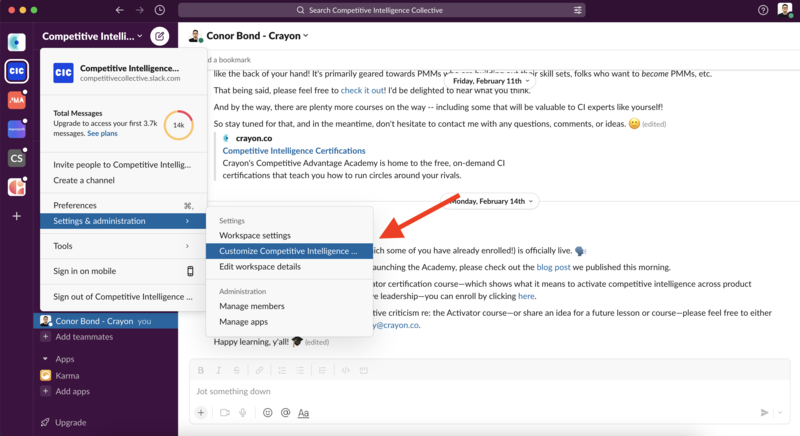
(If you don’t have admin privileges, you’ll have to ask someone who does to do this for you.)
Next, navigate to the Slackbot tab and click “+ Add New Response.”
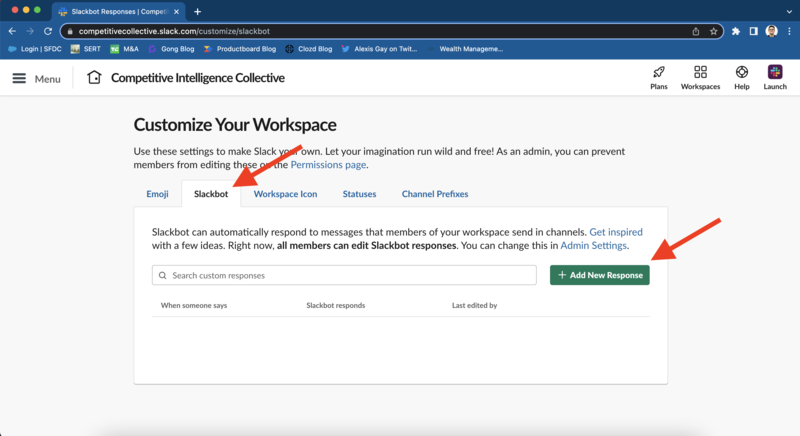
From here, you can tell Slackbot to automatically respond with a link to your battlecard whenever one of your sellers sends a message containing relevant keywords.
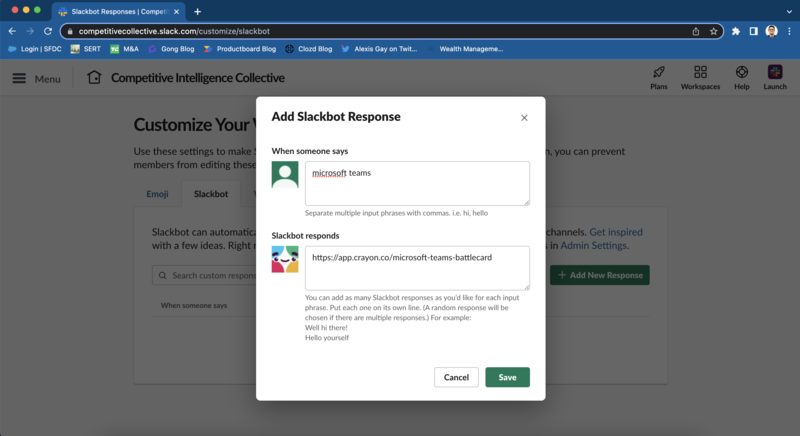
Don’t use Slack? No worries. I’m willing to bet your sellers have their calendars open all day long. So why not create a daily “meeting invitation” and put a link to each battlecard in the description?
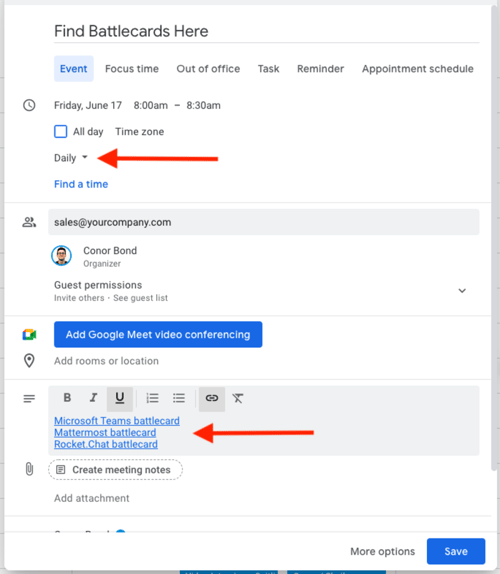
Be creative! Wherever your sellers spend their time, that’s where your battlecards should live. The less energy they have to expend, the better your adoption metrics will be.
Spotlighting role model behavior
Effortlessness is only half the battle. To get your sellers fully on board with battlecards, they need to see, with their own eyes, that the people they admire—i.e., your top performers—are using them.
I’m not just making this up: According to McKinsey, role modeling is the #1 contributor to success when trying to get people to adopt a new behavior.
This is yet another reason to speak with your top performers before creating your battlecards. By asking for their input at the beginning of the process, you’ll make them feel invested, thus making them far more likely to agree to do “role model things.”
By “role model things,” I mean:
- Talking to the team about a recent win or loss and directing them to the corresponding battlecard to learn more
- Hosting office hours on the competitor about which they’re most knowledgeable and using the battlecard as reference material
- Directing their peers to the appropriate battlecard when they see a conversation in Slack or Teams regarding a competitor
Again, be creative! Your top-performing sellers are your partners in this initiative. As long as you get their buy-in from the jump, they should be willing to experiment until you find the right mix of tactics.
Drive your win rates to new heights
Want more battlecard best practices? Curious to know how teams similar to yours are doing from an adoption standpoint? If so, check out the State of Battlecards Report.
Featuring never-before-seen data from our industry-leading State of Competitive Intelligence survey and expert advice from your peers at Gong, Spiff, BioRender, and Swing Education, the State of Battlecards report has everything you need to drive your win rates to new heights.
Once you've launched your battlecards, ensure your adoption rates skyrocket by downloading the battlecard adoption guide below. 👇


